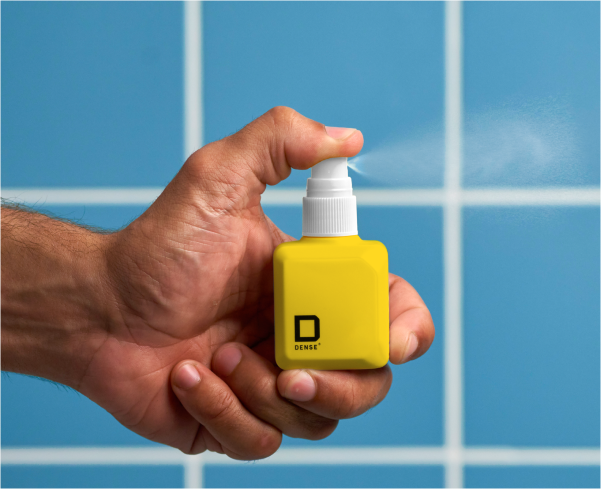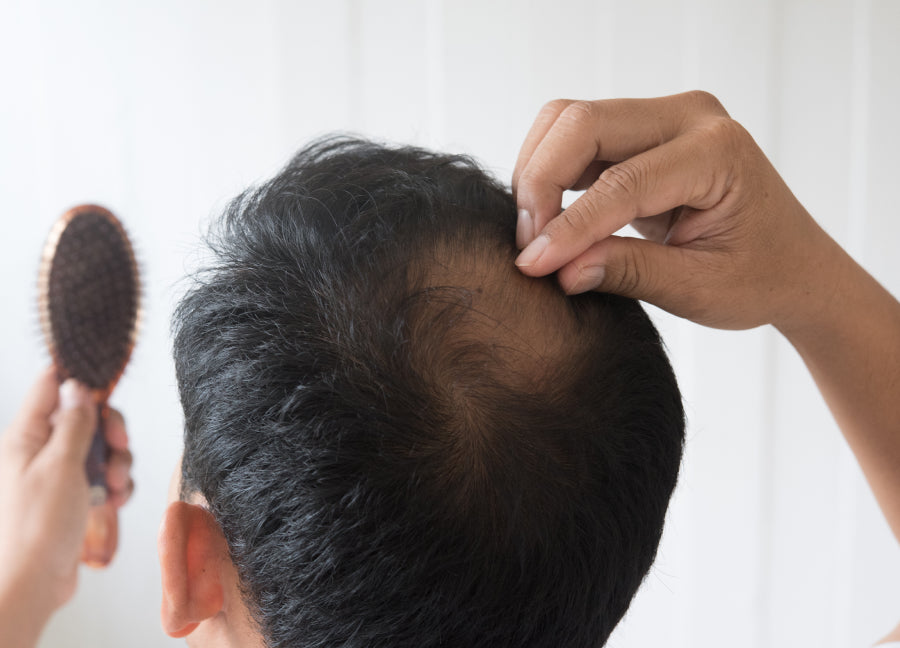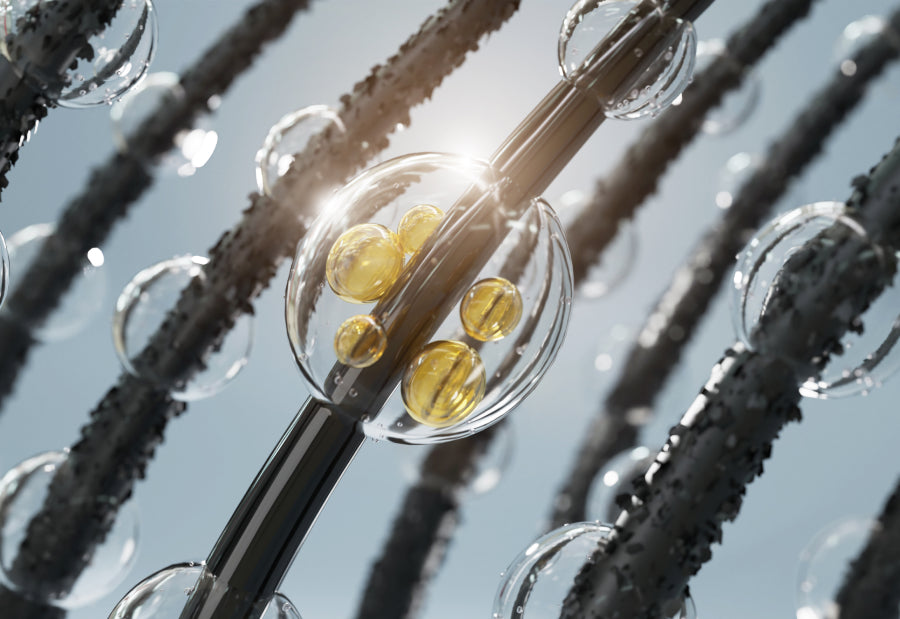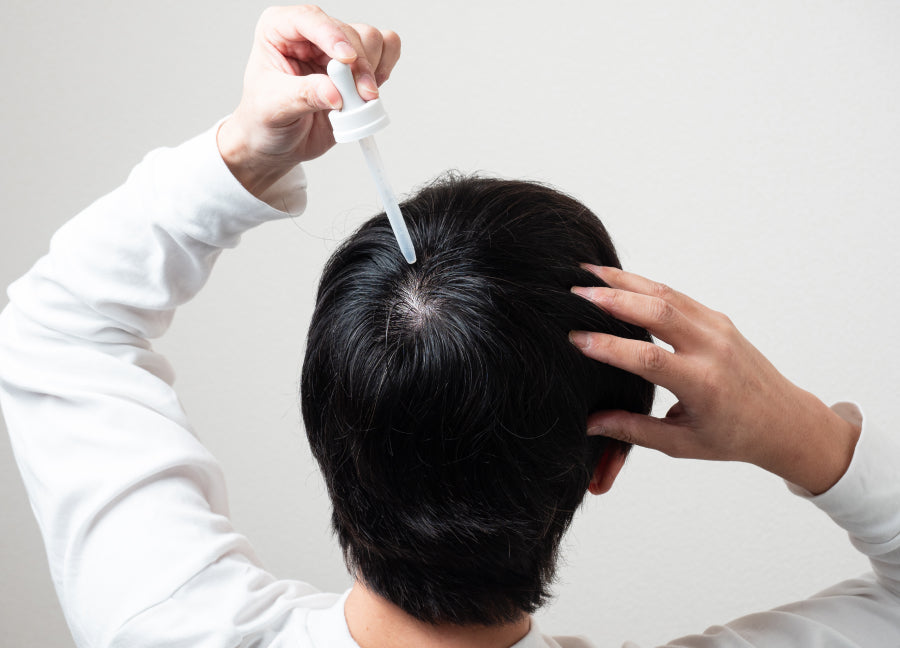You've probably stumbled upon the name 'Fnasteride' in your quest for hair loss solutions. It's one of the go-to choices for those battling the sneaky monster called androgenic alopecia, or in simple terms, male pattern baldness.
But how does Fnasteride work against hair loss, and more importantly, how long does it take to see results?
This article aims to shed light on your burning questions: from the science behind how Fnasteride targets DHT (that's Dihydrotestosterone for the uninitiated) to its effectiveness timeline.
Oh, and if you've ever wondered about the differences between Fnasteride and Propecia or had thoughts about pairing it up with Mnoxidil, stick around, we have answers for that too.

What is Fnasteride?
Fnasteride is a medication primarily known for treating male pattern baldness. It belongs to a class of drugs called 5-alpha reductase inhibitors. At its core, Fnasteride's main task is to reduce DHT (Dihydrotestosterone) levels in the scalp. DHT is a hormone that's frequently blamed for shrinking hair follicles, leading to hair loss. By blocking its production, Fnasteride aims to halt hair loss and promote regrowth.
Are there any long-term side effects associated with Fnasteride use?
Every medication can have side effects, and Fnasteride is no exception. While many men use it with minimal to no problems, some report side effects. The most commonly cited ones include sexual difficulties like reduced libido, erectile dysfunction, or ejaculation disorders. It's worth noting, however, that these side effects are rare and often reversible once the medication is stopped. Always consult with your healthcare professional about potential risks before starting any treatment.
When Should I Expect to Start Seeing Results from Fnasteride?
Ah, the million-dollar question! Hair growth isn't an overnight event, and patience is crucial when taking Fnasteride. The timeline for results can vary, but here's a general guide:
[IMAGE]
Results Timeline: What to Expect

1-3 Months
In the initial stage, you might notice a slight increase in hair shedding. Don't panic! This is because older hairs are making way for new growth. Some users might start seeing subtle regrowth, but the main observable change is a reduction in hair loss.
3-6 Months
During this intermediate phase, the shedding noticed in the first few months starts to decline. Users often see a stabilization in hair loss. For some, the start of finer, "peach fuzz" type regrowth can be observed, particularly in areas that had begun thinning. Remember, everyone's journey is unique, but this period is often where patience truly starts to pay off.
6-9 Months
By this time, most users begin to witness noticeable regrowth, especially in areas that had recently thinned. The hair texture might still be fine, but with continued use, it should gradually thicken.
9 Months +
The joyous phase! The majority of Fnasteride users will have experienced significant hair regrowth. Hair looks fuller, and bald patches or thinning areas are visibly reduced.
Can Fnasteride be combined with Mnoxidil for better results?
Absolutely. Mnoxidil, an over-the-counter topical solution, and Fnasteride can indeed be used together. While Fnasteride works from the inside to decrease DHT levels, Mnoxidil works externally to stimulate hair follicles. When paired, many users report enhanced results compared to using either treatment alone.
What are the common misconceptions about Fnasteride's effectiveness?
Misconceptions abound, especially online. A few common myths include:
It's only for older men. False! Fnasteride can be effective for men of all ages experiencing hair loss.
It causes permanent impotence. While there are reported cases of sexual side effects, they're typically reversible upon stopping the medication.
Using more than the prescribed dose will speed up results. Overdosing doesn't accelerate hair growth and can lead to side effects.
Are there any natural alternatives to Fnasteride in treating male pattern baldness?
Yes, there are. Saw Palmetto is a popular natural remedy believed to reduce DHT levels. Biotin supplements, scalp massages, and certain essential oils like rosemary and peppermint have also been touted for promoting hair health. However, it's essential to research and consult professionals before trying natural alternatives.
[IMAGE]
Final thoughts on Fnasteride to combat hair loss
Fnasteride has proven to be a game-changer for many battling hair loss. While it's not a silver bullet and results can vary, with patience and consistent use, it offers hope for thicker, fuller hair. Remember, always discuss with a healthcare professional before starting any treatment.
Fnasteride FAQs
Q: Can I use hair styling products while on Fnasteride?
A: Yes, using hair styling products does not interfere with the effectiveness of Fnasteride.
Q: How does Fnasteride compare to hair transplants?
A: Fnasteride is a preventative measure to halt hair loss and promote regrowth, while hair transplants involve physically relocating hair follicles to balding areas. Both can be effective but serve different purposes.
Q: Can I drink alcohol while taking Fnasteride?
A: There is no direct interaction between alcohol and Fnasteride. However, always consume alcohol in moderation and consult your doctor for personal recommendations.
Q: What happens if I miss a dose of Fnasteride?
A: If you miss a dose, take it as soon as you remember. If it's close to your next scheduled dose, skip the missed one. It's important not to double up on doses.
Q: Can I take Fnasteride if I have other health conditions?
A: Always discuss your medical history with a doctor before starting Fnasteride, especially if you have liver disorders or other chronic conditions.
Q: Is there an age limit for taking Fnasteride?
A: While Fnasteride is primarily prescribed for adult men, there's no specific age limit. However, its effectiveness and suitability might vary with age. It's not recommended for children.







